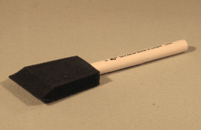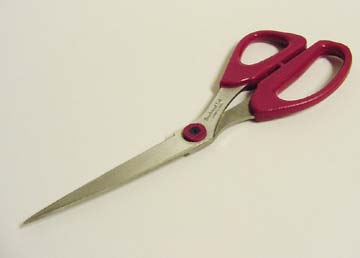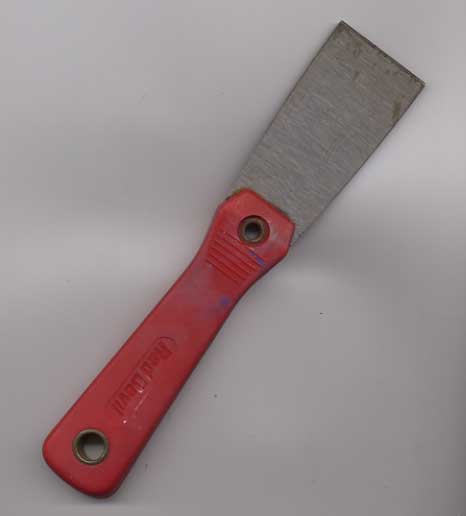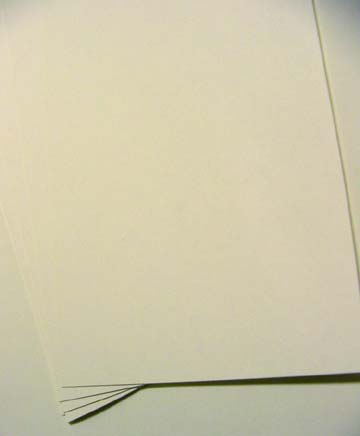Your course outline lists the materials
required for this course. If you are not certain that you are purchasing the
correct materials, DO NOT do so. Please see your
instructor before making any purchase you are uncertain about.
For greater clarity the list of
required materials for Art 125 Silkscreen is presented here annotated
with photographic images:
Textbook

Water-Based Screenprintong Today: From Hands-On Techniques to Digital Technology. By Roni Henning (NY: Watson-Guptil Publicatons, 2006)
There
is NO REQUIRED textbook for this course. I recommend that you purchase this book as a source of additional information (especially if you think that you might enroll in future screenprint courses). The text is available in the bookstore.
In addition to the recommended text I have prepared a small course
guide/handbook and will be provided to you
in electronic form at the beginning of the course. This guidebook contain some basic information
on the history of silkscreen, color theory, and terminology commonly used in the field of
serigraphy (another name used for silkscreen printing).

If
you are interested
in looking at some additional texts in preparation for this course you may
want to consider the following:
Josef Albers, "Interaction of color : unabridged text and selected plates"
SMC Library ND 1489 .A33
6.
Small brushes (mandatory)
Plan on having
two or three small inexpensive paintbrushes to use in class. DO
NOT bring good quality paint brushes because the materials
you will be using with these brushes might ruin them. Check at a local hardware
store for these brushes rather than an art supply store. You might want to
get a 1" wide cheap paintbrush along with these small brushes.

15.
256MB (or greater) USB memory stick or comporable storage device.
You
may wish to store some of your data on your file space and on your CD-R's
but you will need additional and flexible data storage in addition to that. We will be doing a great deal of design work on the computer. You will need this device shortly after the course begins.

8.
X-Acto knife (mandatory)
You
will need one X-acto knife with a No. "11" blade. You
will need this tool for mounting your prints, trimming paper and other miscellaneous tasks.

10.
Mixing bowl (mandatory)
You will need to have a one or two quart plastic mixing bowl for mixing inks for your prints. It would be best if this were a plain white bowl as this is less likely to effect your color perception.
11.
Foam brush
a 1" - 2" width foam brush for use in applying various materials.


13.
Masking Tape (mandatory)
You will need one roll of 1" wide masking tape. You will be using this
tape in various ways in conjunction with your actual printing.

16.
Register pins (mandatory)
Register pins are used by printmakers to align their paper in conjunction
with the printing of various colors. Two of these pins will be provided to
you and you have to pay a $5.00 deposit which will be returned to you at the
end of the semester when you turn in your pins.

18.
Two aluminum pre-stretched screens (purchased through the Art Department). Estimated cost per screen is $28.55+1.99 tax = $30.54 total.

14.
One pair of sturdy rubber gloves (mandatory)
You will need to
provide a pair of sturdy rubber gloves (nitrile variety) for yourself to use in conjunction with various
cleaning processes required in silkscreen printing.

20.
Dark room key. You will need to have a key to access the screen exposure lab
(Room 162) for this course. All photography labs are to be kept closed and
locked when not in use. After I submit your name for approval you will be
able to get your key at the Cashier's window in the Business Office. You will
be asked to pay a $15.00 deposit which will be returned to you when you return
the key. If you do not return your key by the last class day of the semester
your grades may be held by the Registrar's Office.

19.
Ink jet film will be provided per project. Additional sheets may be purchased from the Department

7. White matboard (mandatory)
You will be learning how to mat
your screen prints and will need matboard for this purpose. You will need
approximately two sheets that are 32" X 40" in size. You can purchase
matboard at the SMC bookstore, the ND bookstore and at local stores such as
Hobby Lobby, etc.

9. Metal straight edge (mandatory)
An inexpensive metal yardstick
from the drugstore/hardware will do. You will need a metal rule that measures a minimumof
24".

12. Scissors
A pair of scissors may be helpful
in conjunction with various projects in the course.

1. Lab Apron. You might not want one quite this worked over but you will need an apron, smock or old shirt to help keep you clean while working. Ths one has obviously been well worn.

2. For mixing inks and preparing print materials you will need a standard kitchen spatula like the one illustrated here.

3. For cleaning inks and preparing inks you are going to need a low quality "ink knife". In the hardware stores these are often called "putty knives". Make certain that your putty knife has a metal blade. You don't need the most expensive one on the rack.

4. You wil need two "c-clamps" for mounting your screen to table tops and other surfaces. You do not need a large clamp. One with a 3" jaw will do (that 3" is the width the clamp opens) and usually this measurement is printed on the side of the clamp. If you are uncertain about the size of the clamp ask your friendly hardware saleperson for help.

17. During the semester you will need paper to print on. A good deal of your paper will be provided but on occasions I may ask that you purchase special papers.

5. On some occasion you may need media to create sketches for your prints. For this purpose you may need to purchase some colored pencils or tempera/acrylic paints. If we need these materials I wil let you know in advance. Please don't purchase these unless instructed.

Supplies required for Art 125 Silkscreen





















